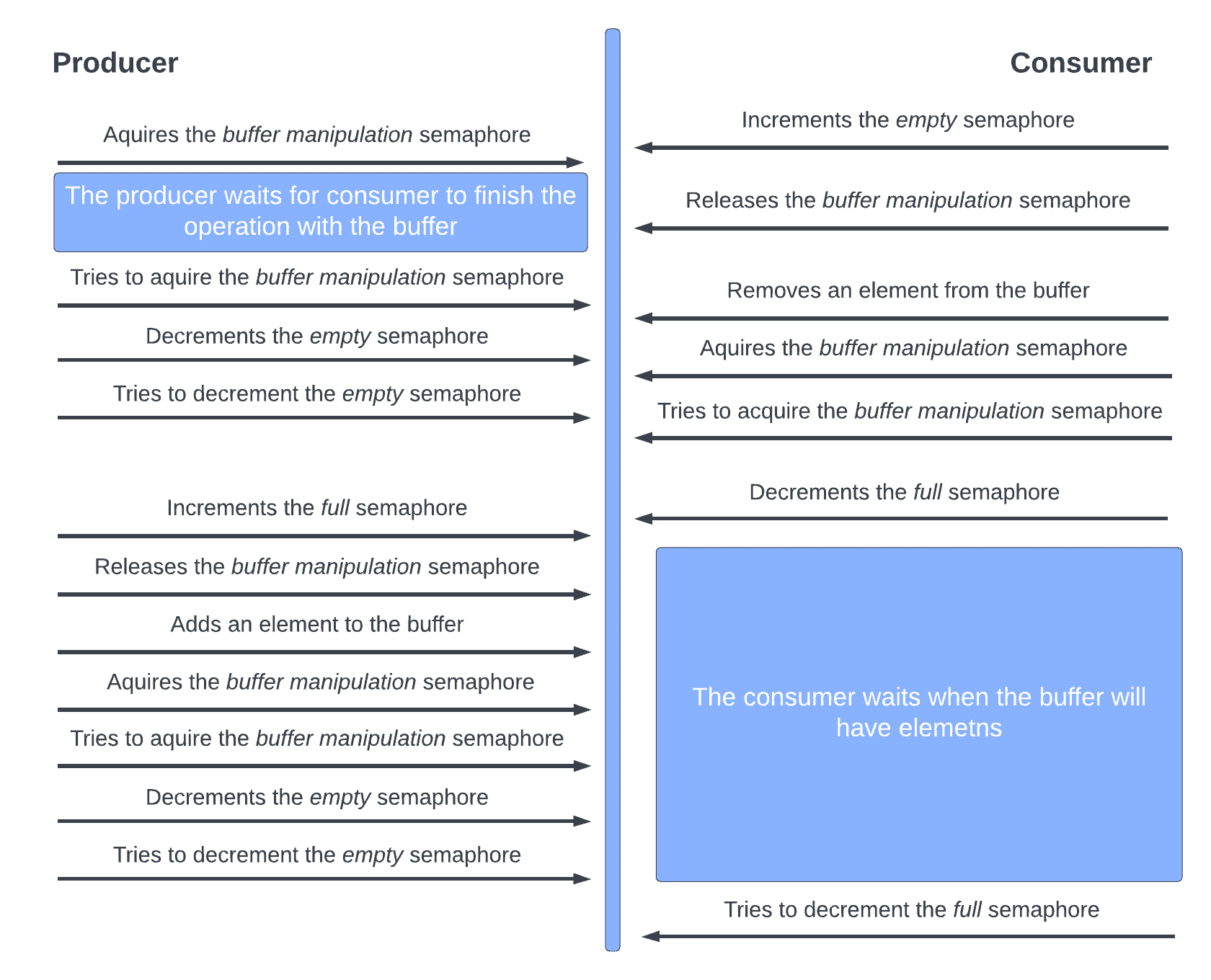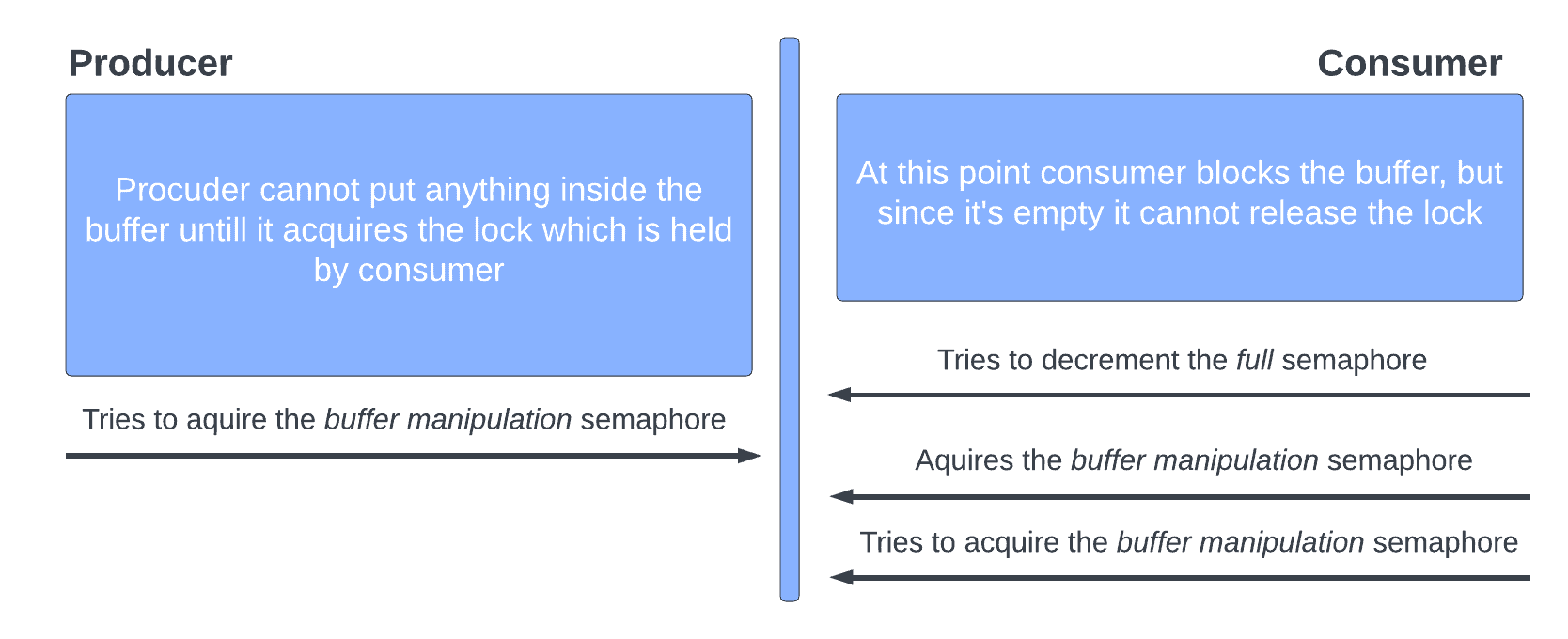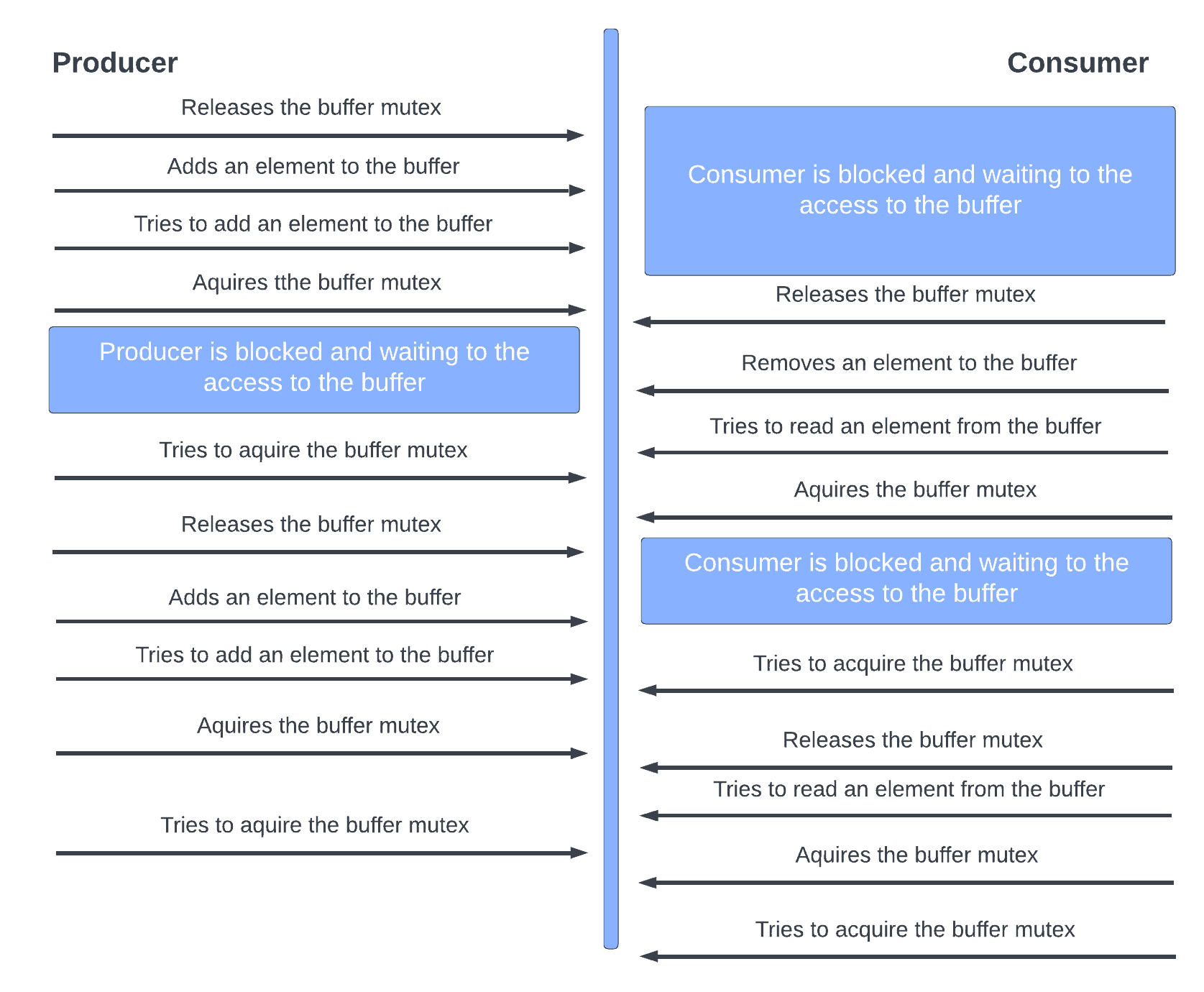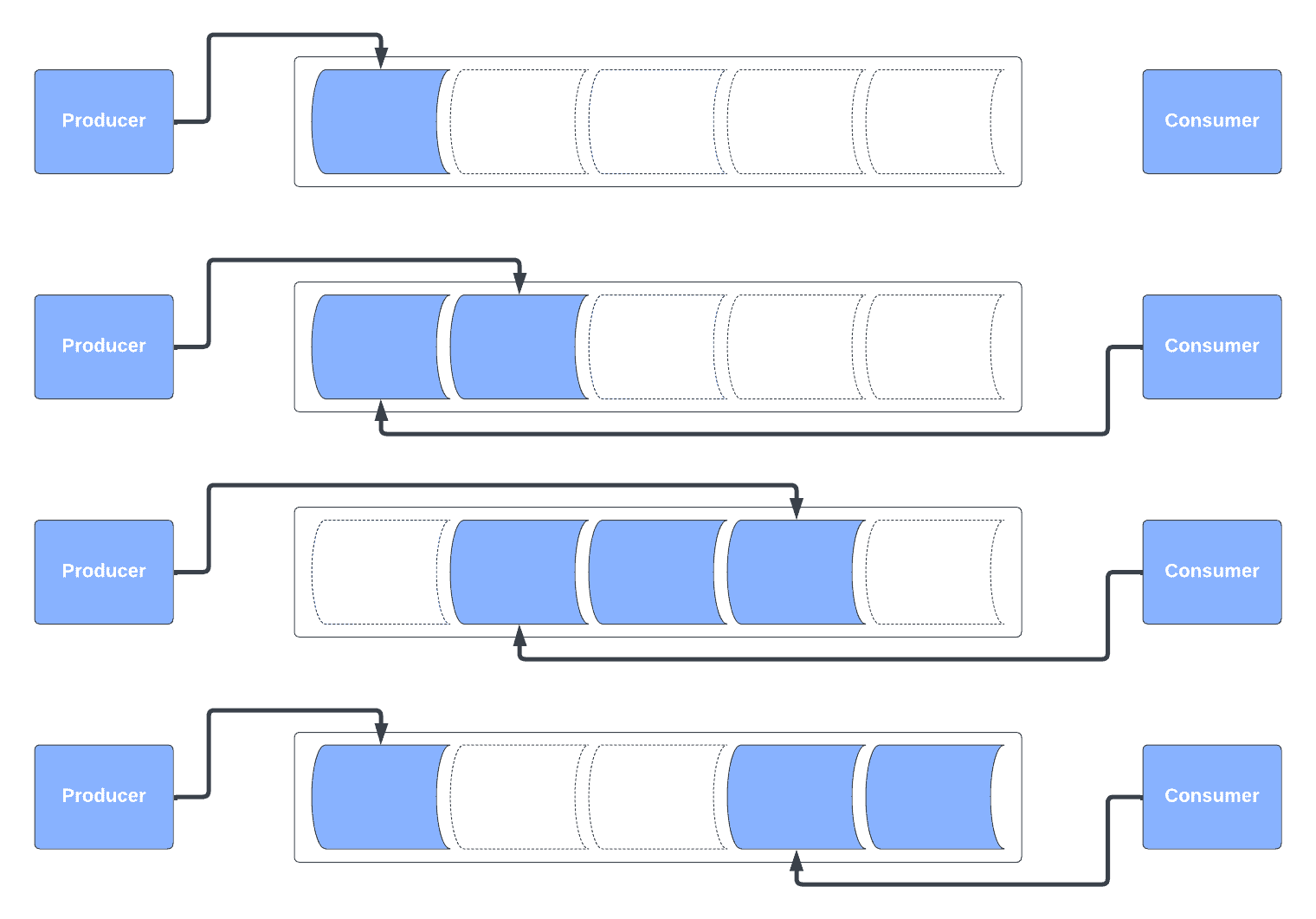1. Introduction
In this tutorial, we’ll explore the Bounded-Buffer Problem, a classical concurrency problem. This problem often arises in multithreading programming. We’ll discuss its definition, significance, and various solutions, including using semaphores, monitors, and circular buffers.
2. Definition and Significance
The Bounded Buffer Problem, also known as the Producer-Consumer Problem, involves a producer that generates data and a consumer that processes the data. The data is stored in a shared buffer with a limited capacity. The buffer is responsible for handling the synchronization and communication between the producer and the consumer processes:

The problem’s primary challenges are to ensure that:
- The producer doesn’t overwrite existing data in the buffer before it’s consumed
- The consumer doesn’t read data that has already been processed
- The buffer manages its limited capacity efficiently
The problem exemplifies common synchronization and concurrency issues in real-world applications, such as task scheduling and inter-process communication. Also, the problem can include multiple consumers and producers, which creates additional challenges:

Multiple consumers might read the same data twice, and multiple producers might overwrite each other’s data. The solution for the Bounded-Buffer Problem with multiple consumers and producers might require more synchronization.
3. Solutions
Many languages provide synchronized data structures out of the box. However, here we’ll concentrate on the concepts that can be used to resolve this problem.
3.1. Semaphores
A semaphore is an integer variable that can be incremented or decremented atomically. It can represent the number of available resources or signal the completion of an operation.
To solve the Bounded Buffer Problem, we can use three semaphores:
-
: representing the number of empty slots in the buffer; initially, it’s set to the buffer’s capacity
-
: representing the number of occupied slots in the buffer; initially, it’s set to zero
-
: a binary semaphore that is used as mutex to ensure that only one consumer or producer uses the buffer
The producer process will decrement the semaphore before adding an item to the buffer and increment the
semaphore after adding an element. The consumer process will decrement the
semaphore before removing an item from the buffer and increment the
semaphore after removing an element:

Note that the decrementing and incrementing operations are blocking and will wait until the and
semaphores have the correct values. The additional
semaphore creates a critical section for the buffer. The
is acquired only when the buffer is correct: it has elements for the consumer and free space for the producer.
If done otherwise, the producer or consumer might acquire the semaphore on the buffer in an incorrect state, resulting in a deadlock:

Using semaphores ensures that the producer will wait when the buffer is full, and the consumer will wait when the buffer is empty. This helps to avoid overwriting or reading stale data.
3.2. Monitors
A monitor is an object with synchronized methods that can only be accessed by one thread at a time. It can also include condition variables, enabling threads to wait for specific conditions.
We can create a monitor object that would block access to the buffer’s adding and removing methods. Inside these methods, we can use condition variables to check if the buffer has the capacity to add new elements or has new elements to read. Otherwise, the thread should release the monitor.
Thus, this approach is similar to the semaphore approach, especially in the example with a deadlock. We’re trying to acquire the lock over the buffer first, but in contrast to the semaphore solution, we’re atomically checking the buffer’s state:

Using monitors ensures that the buffer operations are atomic and that the producer and consumer wait for the appropriate conditions before proceeding.
3.3. Circular Buffers
There’s an option to resolve the Bounded-Buffer Problem without semaphores or monitors, which uses a circular buffer. The solution doesn’t need atomic operations on the empty and full pointers for only one consumer and one producer:

One of the benefits is that in this implementation, we can allow to overwrite old elements if needed. Also, the producer and the consumer increment different pointers, so their synchronization might be relaxed. However, synchronization is necessary for several consumers and producers to prevent lost updates, overwriting elements, or reading elements multiple times.
The basic solution using the circular buffer would require checking the buffer’s condition. The check should block the consumer or producer, so they won’t override data or read it twice. The simplest version might use busy waiting instead of locking. Overall, this approach would be similar to the mutex-based solution.
4. Conclusion
In this article, we discussed the Bounded-Buffer Problem, its significance, and various solutions, including using semaphores, monitors, and circular buffers. Understanding the Bounded-Buffer Problem and its solutions helps to build a strong foundation for tackling synchronization and concurrency issues in real-world applications.